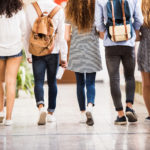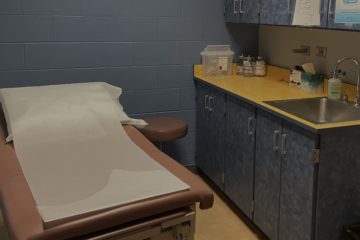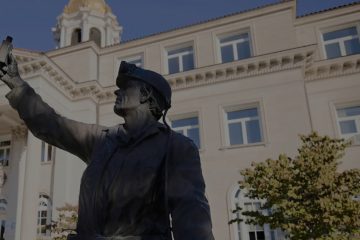Here is a message I’ve received from my principal, twice, in the last two days: “An individual in your child’s classroom has been identified positive for the COVID virus. Following the latest CDC guidelines, you would have been notified if your child needed to quarantine. At this time, your child does not need to quarantine. We ask that you continue to encourage your child to wear a mask appropriately and continually and that you monitor your child for signs and symptoms of COVID.”
In other words, in two of my classes, someone has tested positive for COVID-19. Whereas last school year, many of us in those classrooms would’ve been sent to quarantine for 14 days, this year we’re still in class– because of vaccination rates and mandatory masking. For all of us, “What a relief!” is a huge understatement.
When our schools first closed in March of 2020, I was finishing 10th grade; I am now starting 12th. My age, combined with my ability to work independently, has made school during the pandemic easier for me than most of my peers – especially compared to elementary and middle schoolers. The 15 months we spent at home helped me get more sleep, set my own schedule, take walks between classes. However, I missed so much the feeling of being amongst my peers at school, the meaning it gave me.
Meanwhile, I heard from many of my friends that online school was much harder, that it was easier to get distracted, that it was hard to keep going, that it was lonely. I heard from some of my teachers that many students were just not showing up to class, not turning in their work, not getting in touch. I heard from my sister, five years younger than me, that the constant switching between online and hybrid and in-person made her lost, made it hard to stay on track. Where do assignments go? What is the homework? On which website is class today? Many of my sister’s friends had switched to homeschooling to avoid the uncertainty and instability of 20-21 public schooling. But what about those that did not have that opportunity?
Every day, I would think about going back to school in-person, how important it is for everyone to be together. I would think about all of the students in my county, many of whom rely on the support that our schools give. And I’d hope, for everyone, that things would get better.
This school year, the sense of stability that we lost is slowly coming back. We no longer have to refresh a website every day to find out if we’re going to school; no longer do we have to scramble to find the website on which our English class is meeting. The threat of being abruptly quarantined for 14 days is no longer so urgent. For this, I thank my county for their vaccination efforts, and I thank my county for making masks mandatory.
In schools, peer pressure is king. For instance, when a group of teens was asked why they had started using drugs, 55% indicated it was due to peer pressure from their friends. What to wear and how much to study are all daily decisions commonly influenced by peer pressure. Now, we’ve accepted that masks let us be back in the classroom. Without a mandatory mask rule, however, “Should I wear a mask?” would quickly become yet another daily decision subject to peer pressure: yet another source of stress. As you might guess, masks would most likely be scarcely worn in the halls.
“None of my friends are wearing masks!” “Look, she’s the only one wearing a mask!” “Should I wear a mask today or not?” “I don’t know if I should bring my mask…”
We’ve all been told that community masking helps us keep others safe, preventing exhaled droplets from spreading. Some studies have suggested that masks are 70% effective in preventing transmission of Covid-19. But, like it or not, school is a place of fitting in. These questions, and many more, can easily override the knowledge we’ve all been taught about the importance of health and masks. Mandatory masking removes the pressure, but most importantly, it keeps us much safer. Three or four students wearing a mask is not enough; masking only becomes worth it when we do it together.
A friend recently told me that one of the students she shares a table with in math class got sick with Covid-19. Then, she added, nobody else at the table got sick: “It’s probably because we were vaccinated and wearing masks.” Combined with our county’s high vaccination rate, schoolwide masking is the reason we are back in school, the reason we are mostly stable. It is the reason we can participate in sports, the reason we can meet for clubs. It is the reason we can raise our hand to ask our teacher a question. It is the reason we can all see each other, together.




Elena Kurov is a Senior at Morgantown High School and a youth researcher at the West Virginia Prevention Research Center. Elena is passionate about improving and better understanding youth mental health. In her free time, she enjoys rock climbing and teaching others to climb at her local gym.



0 Comments